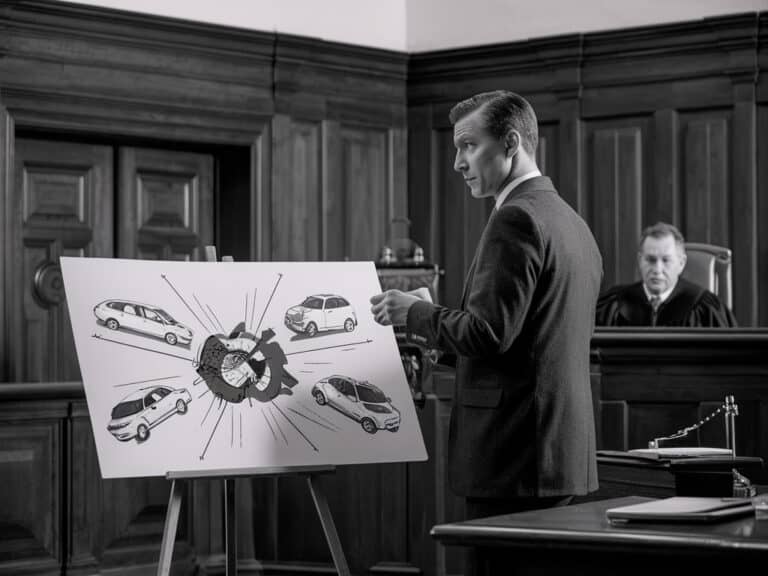Ever felt the aftermath of a nasty burn? It’s not just about the initial sting; it’s what comes after that truly tests your mettle. We’re talking about burn scars – those constant reminders of pain long after the flames have been extinguished. But here’s some good news – managing them isn’t as daunting as you might think. Thanks to the leaps and bounds we’ve made in medical science, getting rid of those annoying marks has become a lot easier with several treatment options now at our fingertips.
The journey from injury to recovery offers various treatment options, including laser therapy, pressure garments, and silicone gel sheets, particularly for burn scars.
Table Of Contents:
- Understanding Burn Scars and Their Treatment
- Innovative Treatments for Burn Scars in Baltimore
- Preventing and Managing Complications from Burn Scars
- Daily Care Strategies for Burn Survivors
- Hire a Burn Injury Attorney
- FAQs in Relation to Burn Scars
- Conclusion
Understanding Burn Scars and Their Treatment
What Are Burn Scars?
When you get a burn, it can hurt your skin badly enough to leave what’s called a burn scar. If the burn only affects the outer layers, the scar tissue usually fades with time. But when the deeper layers get damaged, it leads to more permanent scarring that can look thick, leathery, or uneven.
Types of Burn Scars Explained
Serious burn scars come in three main types:
- Contracture scars: Thick tissue that tightens skin, muscles and tendons.
- Hypertrophic scars: Raised scars with a pink, purple or red color.
- Keloid scars: Raised, shiny bumps that grow outside the original burned area.
These textured, raised scars are common with severe burns, especially if the burn got infected or you have a weakened immune system or chronic inflammation. A burn can also leave a depression in the skin, known as an atrophic scar.
The Healing Process of Burn Scars
Burn scars may or may not hurt. Hypertrophic scars can feel itchy and warm, while contracture scars can limit your range of motion. Here’s what burn scars often look like:
- Color changes – The tissue may be darker or lighter than your natural skin tone.
- Texture changes – The scar may feel thick, tough, fibrous, shiny or smooth.
- Tissue changes – The scar tissue may be raised or indented.
Innovative Treatments for Burn Scars in Baltimore
Laser Therapy Breakthroughs
Laser therapy steps up as a modern, surgery-free method for softening the look of burn scars. It can help flatten raised scars, even out color, and improve flexibility and range of motion. And there’s minimal downtime after treatment.
Recent studies show that laser therapy can significantly improve the appearance and symptoms of burn scars, with long-lasting results. This is a thrilling leap forward for those who’ve survived burns.
The Role of Compression Garments in Scar Management
Pressure garments, worn 24/7, can reduce itching discomfort and protect healing tissue. They apply constant pressure to the scar, which can help it heal flatter and softer.
Silicone Gel Sheets and Their Effectiveness
Silicone gel sheets are thin, flexible sheets that you wear over the scar. They keep the scar hydrated and protected, which can help reduce itching, dryness, and discoloration.
A 2016 study found that silicone gel sheets can significantly improve the appearance and symptoms of hypertrophic burn scars after just a few months of treatment. They’re a simple but effective tool for scar management.
Preventing and Managing Complications from Burn Scars
Navigating Emotional Challenges Post-Burn Injury
The physical scars are just one part of the journey. Burn survivors often face emotional challenges too, like anxiety, depression, PTSD, or struggles with body image. In fact, over 90% of burn survivors experience some psychological symptoms.
Fortunately, there are lots of resources and support services available. Counseling, support groups, and occupational therapy can help burn survivors navigate the emotional healing process and build resilience.
Tips for Reducing Skin Irritation and Discomfort
Burn scars can often feel dry, tight, and itchy, especially in the early stages. To minimize irritation:
- Moisturize regularly with a fragrance-free, hypoallergenic cream or ointment.
- Protect the scar from the sun with clothing or silicone scar strips.
- Avoid harsh soaps, chemicals, or abrasive clothing that can irritate the scar.
- Apply a cool compress or take an oatmeal bath to relieve itching.
- Ask your doctor about oral antihistamines or steroid creams for persistent itching.
Daily Care Strategies for Burn Survivors
Importance of Scar Massage and Lotion Application
Scar massage is a simple but powerful tool for burn recovery. It can help keep the scar tissue flexible, reduce itching and pain, and improve range of motion. Massage the scar in small, circular motions for 5-10 minutes, 3-4 times a day.
Moisturizing is also key to keeping scar tissue healthy. Burns damage the skin’s natural moisture barrier, leading to dryness and itching. Look for lotions with ingredients like shea butter, cocoa butter, or vitamin E. And apply sunscreen to your scars whenever they’re exposed. Sun damage can cause further discoloration.
Understanding your burn scars is the first step towards healing. With innovative treatments like laser therapy, compression garments, and silicone gel sheets, you can improve their appearance and feel better in your skin. Remember to moisturize, protect from the sun, and consider massage for flexibility. Emotional support is key too.
Hire a Burn Injury Attorney
The primary reason for retaining legal representation is to secure the compensation you deserve. Typically, the insurance company representing the negligent party will reach out to you shortly after the incident. It’s crucial not to engage with them or discuss settlements without legal guidance.
At Pinder Plotkin, we initiate a thorough investigation upon receiving your case, independent of others. This evidence is then used to support your claim and identify all liable parties. Our experienced attorneys work tirelessly to ensure you receive the full financial compensation you’re entitled to under the law. Attorney Jason Plotkin wrote the book, literally. Crash Course: To Recovery and Beyond quickly became a best seller and tells the story of Jason’s recovery from two serious motor vehicle collisions.
FAQs in Relation to Burn Scars
Do burn scars go away?
Burn scars often fade over time but rarely disappear completely. Patience and consistent care are key.
What does a 2nd degree burn look like?
A 2nd degree burn swells, turns red, and blisters. It’s painful but heals with proper attention.
How do you tell what degree a burn is?
Judge by the skin’s appearance: First-degree burns redden; second-degree burns blister; third-degree burns appear white or charred.
What are the stages of a burn healing?
Burns heal in phases: Inflammation hits first, then tissue growth and repair follow suit, finally ending with remodeling.
Conclusion
So we’ve walked through this path together – exploring every nook where those pesky burn scars might lurk and unveiling strategies that promise relief. From smart garment choices to embracing cutting-edge therapies like laser treatments; it turns out tackling scar issues head-on doesn’t need an elaborate toolkit or a degree in rocket science.
All it takes is understanding your skin’s needs post-injury and selecting methods that resonate with both comfort levels and expectations for healing.
In our pursuit of smooth skin reborn from the ashes of burns past, remember this – patience is key. Every scar has its story; each one requires time to fade into whispers on your skin’s surface. And while they may never disappear completely, their impact certainly diminishes when faced with informed care decisions bolstered by hope.





